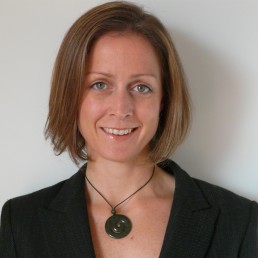5 Top Trends Influencing Cloud in Europe in 2020
I love our annual research planning meetings, and especially so if it is the start of a new era — the 2020s — and about a technology that has triggered the fourth industrial revolution — Cloud!
Based on the conversations with our cloud, application delivery, and infrastructure research teams, as well as CIOs and channel and technology providers, it is clear that cloud in Europe is getting bigger, broader, more layered, and multidimensional. It is not just a technology — it is becoming a de facto operating model for IT.
Discussions are swiftly moving beyond cloud and its standalone value to how it accelerates business-led innovation such as AI and ML, edge computing, IoT, robotics, and low-code applications. Conversations are also about sustainability pledges, overcoming management complexities, enabling better data movement, and cloud ecosystems.
By 2021, European Enterprises’ spending on cloud will grow steadily to over $100 billion. Here are the FIVE TRENDS impacting cloud in Europe:
- Investments to master multicloud and hybrid cloud: Nearly 70% of European enterprises operate in multicloud environments, but for a majority, this environment is by accident.
One rapidly emerging trend is development in multicloud management and infrastructure-as-code across public cloud and on-premises infrastructure. These are starting to come together to deliver real transformation. Investment in on-premises modernization, cloud, and management tools will grow to solve the automation and management conundrum.
- Containers gaining momentum as an enabler of multicloud environments and cloud-native apps: Containers are appealing so enterprises can abstract workloads to run them on any infrastructure, helping overcome the workload stickiness on one infrastructure. Containers are also emerging as a popular choice to develop cloud-native applications.
Examples are emerging where companies are transforming VM workloads to containers to deliver infrastructure as a code, as well as have an agnostic, multicloud-friendly architecture.
By 2023, half of enterprise applications will be deployed in a containerized hybrid cloud/multicloud environment to provide agility and deliver a better management experience.
- AI on Cloud: This is a very interesting space to watch out for.
AI will first be applied in the cloud in 2020 before being distributed, because currently public cloud providers lead commercial AI development and deployment. Two factors are converging for this trend:
- The ML pipeline is moving to the cloud: data storage, model development, training, and inference.
- Machine learning as a service (MLaaS) is making pretrained AI models available to developers via APIs (e.g., image/speech recognition, forecasting, anomaly detection).
These trends deliver benefits to enterprises by addressing issues relating to AI skills, infrastructure requirements, and scaling.
Although hyperscalers currently dominate cloud-based AI, the landscape will shift with the emergence of cloud-native edge platforms, driven by the performance, cost, and the AI needs of applications such as IoT, real-time experiences, and gaming.
- Enterprise workloads moving to the cloud and verticalization of cloud offerings: This is the era in which critical applications — Windows apps, SAP apps, Oracle apps, Java apps, etc. will be refactored or modernized en masse for the cloud.
European organizations have begun deploying industry-specific solutions in cloud environments. By 2023, 64% of enterprises will reduce the cost and complexity of customizing enterprise applications by investing in industry — specific SaaS applications and platforms. The role of vendors is to offer professional services to help with integration and deployment across various industries in Europe, as well as assess current processes and workflows.
- Evolution of the cloud partner ecosystem: The complexity associated with multicloud and hybrid cloud environments creates opportunities for cloud partners to develop and deliver new services.
Ever increasing needs for skills, speed and agility is a key driver pushing the adoption of managed cloud services. Managed and professional services will wrap around cloud offerings, providing ongoing opportunities for partners to provide specialist skills and services.
We will watch and analyse these key trends and how they unravel and impact cloud in Europe, so keep watching this space! If you want to learn more about this topic or have any questions, please contact us, or head over to https://www.idc.com/eu and drop your details in the form on the top right.
The 5G Push to Free Satellite Spectrum
The mobile world is pushing hard in the US, and potentially globally, to take spectrum from the satellite industry, which is under pressure as linear TV gives way to video streaming.
The mobile industry, with its massive data growth rates, is hungry for more and more of the radio spectrum.
5G is a bit of a bandwidth land grab, and has already hoovered up sections of what was left in the middle bands and then at the less occupied top of the spectrum.
It has been pretty usual in the allocation of frequency for new cellular generations to get two separate blocks of frequency, but 5G has mid bands (sub-6GHz) and then a big gap to the mm wave. The mm wave demands network towers much closer together. Most countries are not even thinking about using it yet.
So it is not surprising that attempts are being made to make some more spectrum available lower down the bands in the sub-6GHz zones.
Satellite Operators Saw Big Bucks in Selling Off C-Band
Nor is it a surprise that such initiatives are most advanced in the US, where 5G mid-band frequency is currently in short supply — operator Verizon has very little, needing to move straight to mm wave for much of its deployment.
An initial target for more frequency is the satellite TV industry, which is taking a hit as viewing patterns change and “cord-cutting” becomes prevalent in the US — the satellites feed the cable networks.
Their worlds were formerly very separate. The mobile industry used completely different terms for the initial frequency band which it is now trying to prise from the satellite community — what the satellite folks call “C-Band”, focused on 3.7 to 4.2GHz for the downlink signals and between 5.925 to 6.425GHz for the signals sent up to the satellites.
Just like mobile, satellite usage has been moving up the spectrum to find more bandwidth as technology has advanced. In the US, C-Band could be fairly easily swapped out for satellites for higher frequency, albeit with new antennas and reception electronics and some new satellites launched.
A grouping of satellite operators had hoped to do a private deal with US mobile networks for handing over 300MHz of C-Band for a cool sum estimated by analysts at $30 billion and up. In November, however, the Federal Communications Commission decided that it should run the reallocation of frequency itself (with most of the money presumably going to the US government, rather than companies outside the US — the key satellite players involved, SES and Intelsat, are based in Luxembourg).
Spectrum as a Fungible Investment
C-Band is not used for satellite TV broadcasting in Europe. It has, however, advantages in countries with heavy rainfall, which can degrade satellite signal quality, and so is employed for instance in parts of Southeast Asia and in Africa.
In Africa there is not much current pressure on frequency use for mobile, but in Southeast Asia there is, with the GSMA, which represents the interests of mobile operators, pushing for C-Band reuse for 5G in the 3.3–3.8GHz band.
From C-Band to Ku-Band
In the US spectrum is considered an asset class much more than in other parts of the world. Serious discussion is brewing there of freeing up some of the next satellite band up, the “Ku-Band” to the satellite crowd, which lies in the 12–18GHz range.
Though they would involve smaller service areas from a cellular tower than C-Band, such signals would provide much more extensive coverage from a single point than mm wave.
One person who potentially could benefit from any move here is Michael Dell, founder of the eponymous PC maker, who has Ku-Band holdings in the US. This autumn he called for that spectrum to be made available to 5G, according to Light Reading.
Internationally, moves on switching Ku-Band satellite use to 5G will be much more problematic than on C-Band. Ku-Band is the bread and butter of the direct to home satellite TV industry in many regions, including the Americas and Europe.
In addition, there are other new contenders in the satellite business for its use — Elon Musk’s Starlink and the OneWeb low earth orbit satellite constellations both plan to operate in this band.
Planning for Even Higher Frequencies
TV and telecommunications satellites use a third frequency allocation, the “Ka-Band” (26.5–40GHz), which is yet higher up the spectrum with wavelengths from slightly over 1cm to 7.5cm.
This is about as high up the spectrum telecom and TV satellite signals can be received easily, and so may become the satellite industry’s last bastion. A third contender in low earth orbit satellite systems, Jeff Bezos’ Kuiper constellation, aims to work in this band.
Individual countries have discretion to alter frequency use within their territories, but the general bands are set globally or regionally by meetings of the Radiocommunication Assembly, an offshoot of the International Telecommunications Union (ITU), itself part of the United Nations. Its decision-making process may appear rather byzantine, and its spectrum get togethers infrequent, but the outcomes can be very important.
The latest sessions, known as the WRC — World Radio Conference, were held in Sharm El Sheikh in November. With a lot of lobbying from the GSMA, more frequency was set aside for 5G in the 40GHz and 66GHz ranges, well up in the mm wave, but also at the lower 26GHz. The next important round for 5G will be the next WRC in 2023.
Lower Bands May Also Become Available
The last area to look in the search for 5G bandwidth is away from satellites, at changes lower down the spectrum. Such refarming of frequencies has been common in the past.
Some low-band frequency has been allocated to 5G at 600MHz, which T-Mobile is already bringing into use in the US.
Mobile operators also have their eyes on the 700MHz band in what is known as the “digital dividend”, spectrum which has become or may become free from country to country as analogue TV signals are switched off following the move to digital multiplexes. Simple things first.
If you want to learn more about this topic or have any questions, please contact Simon Baker, or head over to https://www.idc.com/eu and drop your details in the form on the top right.
Top 3 European DevOps Trends to watch in 2020
Recently, we have had several discussions on what DevOps will mean in the next decade, particularly for European organizations.
Across Europe it’s clear that DevOps plays a role in changing the way an organization is perceived externally. Not only because apps (essentially new digital products and services) are being pushed out faster, but because the apps built deliver better business value and growth potential.
This is fundamental.
Speed and velocity are great, but if organizations don’t link this back to the business to understand and measure the business value delivered, efforts to accelerate DevOps will hit a wall.
Throughout 2019 there was increased focus on getting the underlying framework and foundation right to support DevOps and accelerated app delivery. This included fine-tuning behaviors, tooling simplification and governance, the transition to modern app architectures, legacy integration, automation-led strategies, and changing, adapting, and fine-tuning CI/CD metrics that support maturity.
Three Key Themes Will Define DevOps in 2020
Moving into 2020 a number of these initiatives will continue. However, we see short- and long-term investment increasingly tied to the notion of operating more like a software company and the ability to tame complexity while gaining real-time insight. Why? Because an organization’s ability to rapidly develop digital innovation (digital products and services) will be a core competitive requirement, as more than half of the European economy will be digitally driven in the next three years.
This requires every organization to become, in effect, a “digital innovation factory.” Several organizations are already on the journey to becoming prolific software producers, creating and distributing digital products and services with digital-native speed and scale.
As organizations evolve to support future enterprise needs, the role of DevOps will evolve and expand. We see three key themes defining European investment strategies to support accelerated app delivery and enterprise-scale DevOps in 2020.
Firstly, DevOps process, governance, monitoring, and management. There is a clear realization that to enable DevOps to become business as usual, organizations must rethink how products/services are funded, governed, and made compliant. They must also consider tool complexity, culture, organizational goals, and sourcing models.
Secondly, short-term investment prioritization focuses on API management, open source repositories (reusable in-house and external components), and security integration. In parallel, the transition to cloud-native architectures continues, driven by the need for organizations to master working at scale. Business value creation, iteration at speed, and the ability to lower the cost of experimentation fuels demand for cloud-native initiatives.
Thirdly, 2020 is all about automation, with a core focus on injecting automation into the overall DevOps pipeline and moving toward a unified automation strategy. While organizations are slowly progressing, there is still a lot of work that needs to be done. Currently only 1 in 10 organizations has achieved continuous integration with automated build and release management. We expect to see an acceleration in the number of organizations that embrace the principles of continuous integration and deployment, and that prioritize automation and tool pipeline improvement.
The number 1 automation rationale is tied to the ability to support ambitions to deliver apps, including cloud-native apps, via hybrid and multicloud environments. Multicloud automation, orchestration, and self-service portals will have a significant impact in supporting future IT and DevOps needs. However, we see a significant gap between ambitions and current capabilities to execute on multicloud strategies.
Cultural Change Always Gets Overlooked, But Could Hold the Key
While a lot of the focus remains on technology changes required to support accelerated app delivery, in truth the ability to scale DevOps and drive change revolves around cultural change. By 2021, 80% of European organizations will adopt DevOps but only 10% will excel in terms of accelerated performance and delivery cycles.
Cultural inertia is the stumbling block. Driving and measuring cultural change is top of mind for 1 in 2 European organizations in 2020. When addressing cultural change, organizations trying to replicate or copycat “unicorn culture” without adapting to their unique company identity will struggle to produce value or returns. Culture has to relate back to the company DNA and its roots.
This cultural challenge is multidimensional, transcending collaboration, customer engagement and feedback, continuous learning, metrics and KPIs, and business vision and leadership.
Many organizations address the DevOps and enterprise agility challenge from primarily a technical point of view, but when agility is confined to the tech or IT alone it brings no value. Organizations need to embrace a “dare to try” attitude and have the confidence to execute and drive change.
In IDC’s view, high performance requires a unique culture. There’s certainly proof in Europe. Development, operations, and engineering teams are becoming cultural change agents at high-performing organizations. Companies embracing a dev culture focused on minimum viable products (MVPs) and continuous customer feedback loops have seen a 38% improvement in customer lead times in the past 12 months alone.
If you want to learn more about this topic or have any questions, please contact us or head over to https://www.idc.com/eu and drop your details in the form on the top right.
Learn more about IDC’s Future of Digital Innovation Research and the importance of software in IDC’s research perspective, “The Future of Digital Innovation: Every Enterprise Must Become a High-Performance Software Producer”.
Transformation of Urban Logistics in Smart Cities
Urban logistics are being transformed by bringing together city transport planners, logistics operators, and users of delivery services to apply digital technologies to grow the city economy, while making logistics services sustainable.
Remember how many packages you had delivered to your doorstep last Christmas? How thrilled you were every time the bell rang? Think again. eCommerce is convenient and it’s a major economic opportunity for small and medium-sized logistics businesses in European cities, but it’s also a challenge that needs to be addressed.
Delivery demand patterns are changing to offer on-demand delivery that is more personalized and more frequent, with smaller shipments and better return services. The blending of commerce and ecommerce is driving this demand, through a seamless “commerce everywhere” experience.
In Paris, for instance, Amazon delivers around 250,000 packages a day. On the supply side, brick-and-mortar retailers are trying to operate with minimal inventories by leveraging leaner supply chain approaches.
Rethinking the Urban Supply Chain
Greater fragmentation and growth in delivery demand, coupled with the need to minimize inventories on the supply side, have created a mismatch that has led to suboptimal utilization of city logistics. This means that many delivery trips are made with low load factors and backhaul trips are empty. More delivery trucks traveling half empty, roaming around looking for parking or blocking narrow lanes to load and unload packages, exacerbates congestion and pollution problems in cities.
Traffic accidents are also a risk. Transport for London (TfL) research finds that heavy goods vehicles are involved in 63% of fatal collisions with cyclists and 25% of fatal collisions with pedestrians, despite only making up 4% of the overall miles driven in the capital.
Embrace Innovative Urban Logistics Solutions
City leaders that want to make their cities smart can work with the ecosystem of retailers, ecommerce companies, logistics operators, and new mobility operators (such as transport network companies and food delivery specialists) to address these challenges by creating a virtuous cycle of:
- Increasing the productivity and energy efficiency of delivery vehicles
- Improving the effectiveness, reliability, and convenience of delivery services
- Reducing externalities such as air and noise pollution, congestion, and traffic accidents
In response, the European Union, national and city governments, and private sector supply chain operators are increasingly scaling five types of initiatives to improve city logistics:
- Flexible deliveries through modular shipments and multimodal transport means. Example: In Italy, there are over 60 bicycle logistics operators in 40 cities.
- Collaboration across stakeholders. Example: MixMoveMatch, a Norwegian company, offers a software-as-a-service solution to shippers and logistics service providers to mix, move, and match shipments to optimize truck loads and reduce duplicate trips.
- Electrification of fleets. Example: In the U.K., Sheffield and Westminster city councils have started to test electric waste collection trucks powered by energy from the household rubbish they collect.
- Proximity of deliveries. Example: The Mayor of London and TfL are working with boroughs, businesses, and the freight and servicing industry to transform the way deliveries are made in the capital. A key part of the plan includes offering more click-and-collect points at Tube stations.
- Optimization of freight traffic. Example: The City of Paris is evaluating how to limit deliveries to inner city neighborhoods to specific times, with a maximum number of deliveries capped for each area.
European city leaders that want to harness the opportunity and tackle the challenges of city logistics should include sustainable logistics programs in their intelligent transportation strategies. They should also work with the ecosystem to pilot new business models and embrace technologies such as artificial intelligence, the Internet of Things, video surveillance, and mobile and GPS. This will enable them to optimize traffic, share shipment data, and increase physical security and cybersecurity of city logistics.
If you want to learn more about this topic or have any questions, please contact Massimiliano Claps, or head over to https://www.idc.com/eu and drop your details in the form on the top right.










